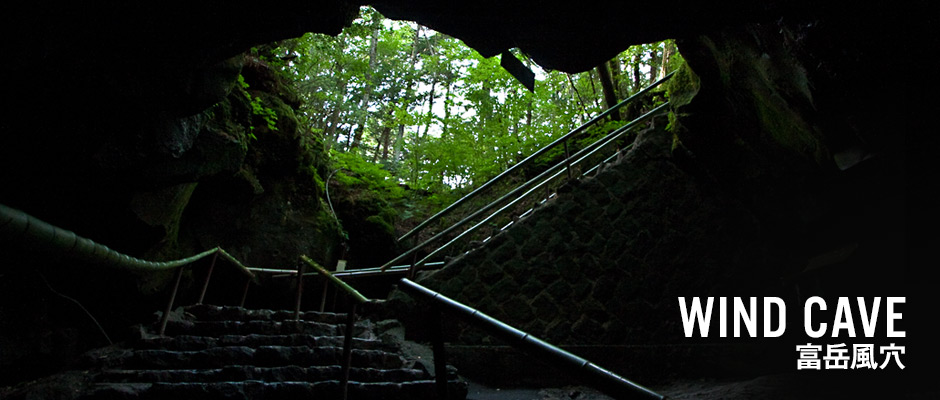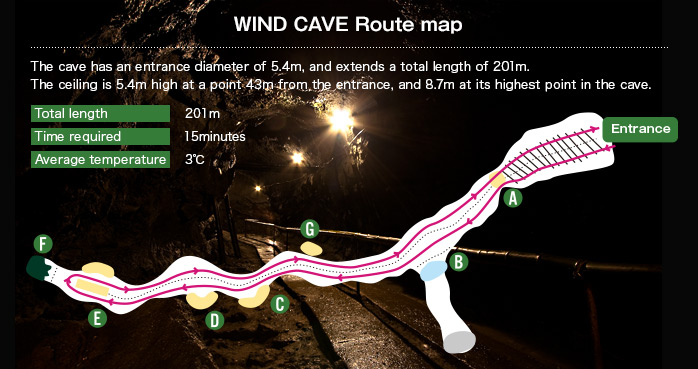
Tourists, including children and seniors, can easily walk through the lateral type cave. It was also used as a natural refrigerator before refrigeration equipment came into being.
The Fuji Fugaku Wind Cave is surrounded by the abundant greenery of the Aokigahara Jukai forest. Once you enter the cave, it is pleasantly cool even in summer, with an average temperature of 3℃. Up until the beginning of the Showa era, it was used as a refrigerator to store the eggs of silkworms. The cave has also been designated as a Japanese natural monument. The lateral cave is 201m long and 8.7m high, and strangely enough, does not produce an audible echo. This is because its basaltic walls act to absorb the sound. In the course of a 15 minute sight-seeing tour, one can see lava shelves, rope-like lava, and ice pillars that do not melt even in summer.


The entrance is a wide gaping hole situated amid the lush forest. The ceiling below the staircase is low, so be sure to watch your head.

The walls of ice are reminiscent of a culture long ago when natural ice was cut up into blocks and stacked in piles for use as a natural refrigerator.

This is where lava has been raised up in a rope-like manner, due to the slower downstream flow of lava being pushed down from the top.

Until around 1955, the cave served as a storage place for seeds and cocoons that were actually used. In order to keep them from growing, and to preserve good quality seeds for better budding, the cocoons and seeds were kept in cold storage.

This is a type of moss that is technically called "silicate hana". It grows on rock walls and has a bluish-white shine. The extensive reflection of silver is said to be unusual.